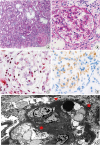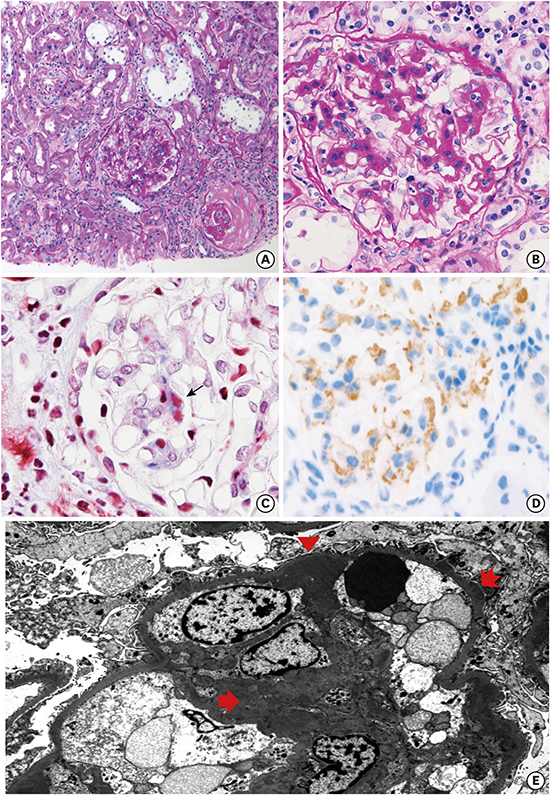1. Sethi S, Fervenza FC. Membranoproliferative glomerulonephritis--a new look at an old entity. N Engl J Med. 2012; 366(12):1119–1131.
2. Pickering MC, D'Agati VD, Nester CM, Smith RJ, Haas M, Appel GB, et al. C3 glomerulopathy: consensus report. Kidney Int. 2013; 84(6):1079–1089.

3. Sethi S, Quint PS, O'Seaghdha CM, Fervenza FC, Bijol V, Dorman A, et al. C4 glomerulopathy: a disease entity associated with C4d deposition. Am J Kidney Dis. 2016; 67(6):949–953.
4. Ali A, Schlanger L, Nasr SH, Sethi S, Gorbatkin SM. Proliferative C4 dense deposit disease, acute thrombotic microangiopathy, a monoclonal gammopathy, and acute kidney failure. Am J Kidney Dis. 2016; 67(3):479–482.
5. Sethi S, Sullivan A, Smith RJ. C4 dense-deposit disease. N Engl J Med. 2014; 370(8):784–786.

6. Strife CF, McEnery PT, McAdams AJ, West CD. Membranoproliferative glomerulonephritis with disruption of the glomerular basement membrane. Clin Nephrol. 1977; 7(2):65–72.
7. Sethi S, Fervenza FC, Zhang Y, Zand L, Vrana JA, Nasr SH, et al. C3 glomerulonephritis: clinicopathological findings, complement abnormalities, glomerular proteomic profile, treatment, and follow-up. Kidney Int. 2012; 82(4):465–473.

8. Jabs DA, Nussenblatt RB, Rosenbaum JT; Standardization of Uveitis Nomenclature (SUN) Working Group. Standardization of uveitis nomenclature for reporting clinical data. Results of the First International Workshop. Am J Ophthalmol. 2005; 140(3):509–516.
9. Han JM, Lee YJ, Woo SJ. A case of tubulointerstitial nephritis and uveitis syndrome in an elderly patient. Korean J Ophthalmol. 2012; 26(5):398–401.

10. Aguilar C, Lonngi M, de-la-Torre A. Tubulointerstitial nephritis and uveitis syndrome: case report and review of the literature. Ocul Immunol Inflamm. 2016; 24(4):415–421.

11. D'souza YB, Jones CJ, Short CD, Roberts IS, Bonshek RE. Oligosaccharide composition is similar in drusen and dense deposits in membranoproliferative glomerulonephritis type II. Kidney Int. 2009; 75(8):824–827.






 PDF
PDF Citation
Citation Print
Print




 XML Download
XML Download